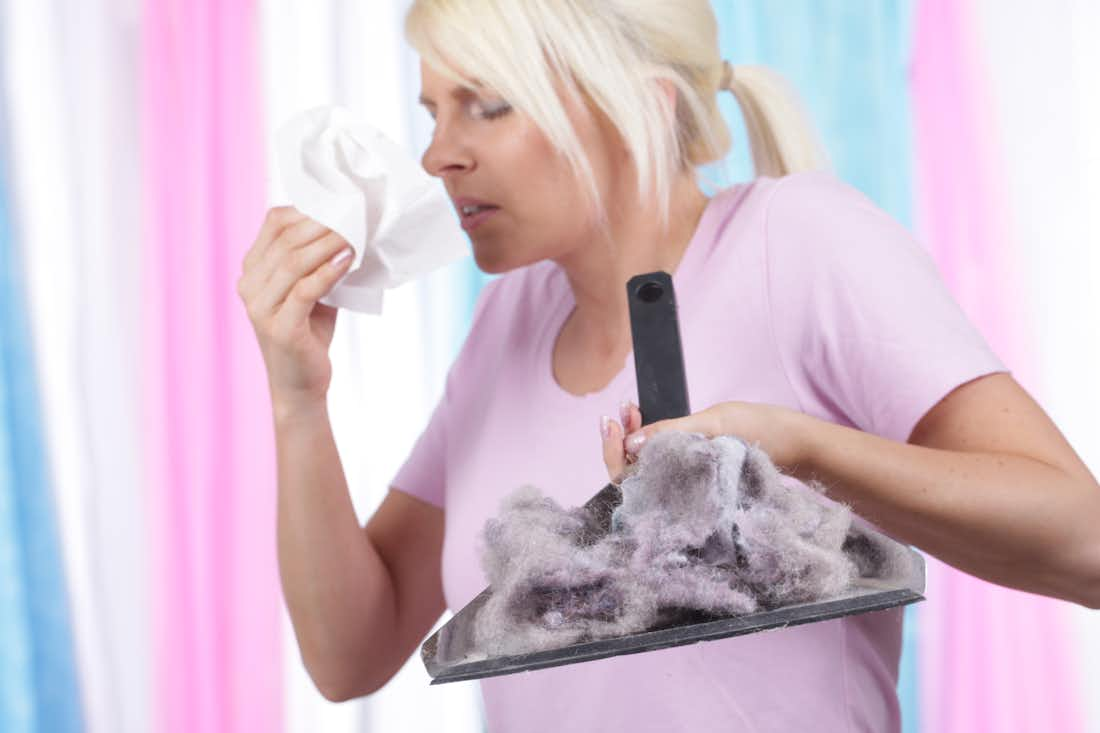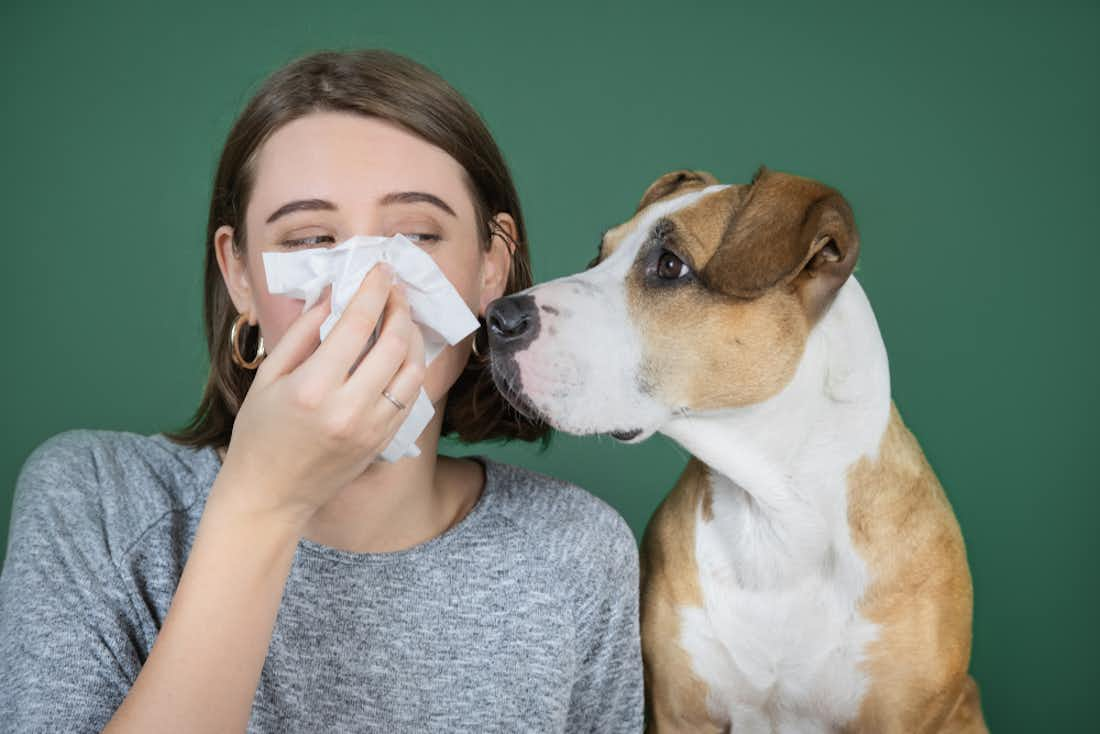May 24, 2022
Sterling Silver Allergy
6 minute read
A stunning piece of jewelry can brighten up any outfit, even those you feel like you wear every day. However, if you find yourself itchy and uncomfortable after wearing your favorite sterling silver pieces, allergies may be to blame.
Sterling silver allergies are a common type of allergic reaction that most often occurs from wearing jewelry items. But don’t feel like you need to stop wearing your favorite pieces just because they’re causing you some trouble.
Here’s everything you need to know about sterling silver allergies, including how you can treat them.
What Is a Sterling Silver Allergy?
Sterling silver is a bit of a misnomer because it’s not entirely composed of just silver. If you ever wear a sterling silver piece of jewelry or use sterling silverware, you’re actually using an item that is 92.5% pure silver and 7.5% another metal alloy like copper or nickel.
In most cases, when someone has a sterling silver allergy, they’re not actually allergic to the silver itself.
Instead, they are allergic to the other metals that compose the alloy. Nickel is a very common trigger often used in sterling silver because it looks nearly identical, helping it maintain that unique sheen and polish.
It’s not exactly known why some people’s bodies react to nickel and other metals in an adverse way, but as with other allergies, they develop due to a faulty immune response in which the body perceives a foreign substance to be harmful.
Nickel is a harmless substance that poses no risk to human health, but some people have immunoglobulin E (IgE) antibodies that react with nickel to elicit an allergic reaction.
Once you have a reaction to a particular agent, like nickel, your immune system becomes more sensitive to it. This means that you'll produce an immune response whenever you come into contact with nickel.
What Are the Symptoms of a Sterling Silver Allergy?
In contrast to food allergies or indoor and outdoor allergy triggers, a sterling silver allergy is a type of contact dermatitis. This means that it affects the outer layer of skin from physical touch and exposure.
Symptoms of sterling silver allergy, as well as other types of contact dermatitis, include:
- Red, itchy rash
- Dry, cracked, or scaly skin
- Swelling, burning, or tenderness
- Bumps, blisters, or wheals
An allergic reaction can affect all areas of the body — not just the location that has been exposed to the trigger.
In most cases, these symptoms are mild and go away once the allergen has been disposed of. However, if you experience increasing burning or pain, pus in the affected area, you should contact a doctor immediately.
While contact dermatitis is not normally dangerous in itself, the itchy and uncomfortable rash can pose a risk of sepsis. You may be inclined to itch and scratch the rash, and if you scratch so much that you open up a wound, bacteria can enter the space and possibly lead to a serious infection.
What Are the Causes of Sterling Silver Allergies?
There are a number of different products and items that can cause a sterling silver allergy. But again, most of these items contain nickel or another metal that is usually the culprit rather than the silver itself.
Some common items that can elicit an allergic response include:
- Silver bracelets, earrings, rings, necklaces, watches, and pendants
- Body piercings
- Coins
- Belt buckles
- Keys
- Silverware or cutlery
- Clothing fasteners, like zippers or bra hooks
- Military IDs or dog tags
- Laptops or computer tablets
How Can I Test for Sterling Silver Allergies?
The best way to test if you have a sterling silver allergy is by getting an allergy test.
Testing for contact allergens involves a test called a patch test. A patch test uses small amounts of the allergen and then a patch or bandaid like material is placed over the allergens and sits on the skin for 48 hours and then it is removed to look for a reaction. And you will also be asked to come back at 72 hours. Contact dermatitis is a delayed reaction that is why we wait for 2 days before bringing you back in.
If you are allergic to a particular substance, you will have a red, elevated area of irriation in the area. We can test for one or two chemicals like nickel and other metals that might be in silver if you are worried or we can test for multiple allergens to rule out another cause for your contact dermatitis.
How Can I Prevent Sterling Silver Allergies?
The best strategy to prevent an allergic reaction to sterling silver is by just avoiding contact with it in the first place. You can find out if a jewelry item is made of sterling silver because it will be marked by a “925”, which represents the fact that it is 92.5% silver.
Wear Hypoallergenic Jewelry
There are plenty of jewelry alternatives that do not contain nickel or even silver.
Typically, jewelry items made of stainless steel tend to be less abrasive to individuals with a predisposition to contact dermatitis when they wear jewelry. Gold and titanium are also often hypoallergenic. They just tend to cost a little bit more.
If you have a favorite piece of sterling silver jewelry that you don’t want to part ways with, you might be able to apply a clear coat of nail polish to the item. The only downside is that you will need to reapply the polish frequently to make sure the jewelry stays adequately coated.
Create a Protective Barrier
If you know that you’re going to be working with metals, or if you’re going to be wearing a garment that might contain sterling silver, you might want to try to create a physical barrier. You can do this by covering buttons, zippers, or other items with clear duct tape to prevent the metal from making contact with your skin. Wear gloves if you know you’ll be working with metals for an extended period.
How Can I Treat Sterling Silver Allergies?
Preventing sterling silver allergies isn’t always possible. If you start to notice a reaction taking place, there are a few things you can do.
Remove the Trigger
Contact dermatitis typically only lasts for as long as the body is exposed to the suspected allergen. For that reason, if you remove the piece of jewelry or clothing from your body, the reaction will typically subside on its own.
In the meantime, there are some ways you can alleviate the symptoms of a sterling silver allergy to enhance your comfort.
Topical Creams
You can use topical ointments to improve the condition and reduce irritation on your skin due to a nickel allergy or sterling silver allergy. Corticosteroid creams, or nonsteroidal creams, can reduce itching and help improve the appearance of the skin.
You can also use oral antihistamines to relieve the symptoms associated with an allergic reaction. These work by blocking the effects of histamine, which is a chemical that causes many of the symptoms of allergies.
Immunotherapy
While topical creams and antihistamines work to alleviate the symptoms of a sterling silver allergy, they don’t treat them at the source. Allergy immunotherapy (AIT) works differently, as it actually works to reduce your sensitivity to allergies as a whole.
With AIT, you’ll be exposed to a small amount of your suspected trigger over a period of time, gradually allowing your body to develop a tolerance. It’s like running an extra .1 miles every single day until you’re finally able to run the full marathon.
There is currently no AIT for sterling silver allergy, but there are plenty of other options to combat your symptoms for common allergens like grass pollen or seasonal pollen allergies. Take your free allergy consultation to see if this revolutionary treatment is right for you.
In Conclusion
Sterling silver allergies are a form of contact dermatitis that occurs when sterling silver jewelry, buckles, or other products make contact with the skin. However, most people aren’t allergic to silver itself – they are allergic to the other metals that compose the sterling silver alloy.
Symptoms of a sterling silver allergy include red, itchy, bumpy rashes. You can prevent them by avoiding sterling silver products or putting a physical barrier between the item and your skin.
As far as treatment goes, it’s focused on reducing the discomfort from the symptoms.
But if it seems like there’s something else causing you to get hives and rashes, your online allergist is ready to see you. Take your free consultation to get personalized treatment from a licensed allergist so you can finally feel the relief you’ve been craving.
Sources:
Immunoglobulin E (IgE) Defined | AAAAI



